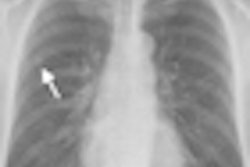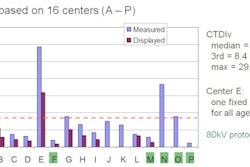The yield of additional pathological findings was quite low in a group of symptomatic patients who underwent flexible sigmoidoscopy after virtual colonoscopy screening, according to a poster presentation at this week's Digestive Disease Week meeting in New Orleans.
On the other hand, flexible sigmoidoscopy found a colorectal cancer not seen at VC, wrote Dr. Christian Selinger and colleagues from the University Hospital of South Manchester in the U.K. The study aimed to explore whether flexible sigmoidoscopy increases the polyp and carcinoma detection yield when used in addition to virtual colonoscopy, also known as CT colonography (CTC).
Flexible sigmoidoscopy increases the yield of polyps and colorectal cancers when used after double-contrast barium enema. The researchers wondered if this might still hold true now that VC has replaced double-contrast barium enema at many U.K. hospitals.
"There's a lot of data on colonoscopy, but flex sig is done with no sedation and a different bowel prep, and hence you get a bit of a different test ... and that's why we looked into the issue," said Selinger, a gastroenterologist who is specialist registrar at the hospital, in an interview with AuntMinnie.com.
In addition, before VC was implemented, "there was a practice in the U.K. where patients who went to [double-contrast barium enema] would get a sigmoidoscopy because the barium enema wouldn't give you good enough views of the rectum," he said.
When VC replaced the barium enema, some physicians wanted to continue the practice, especially since suboptimal insufflation can often reduce the sensitivity of VC in the rectosigmoid region.
The retrospective study examined the facility's endoscopy and radiology databases to identify 294 patients (mean age 67 years, 179 women [60.8%]) who had undergone both exams between 2007 and 2009. All were referred for various symptoms.
Some time after flexible sigmoidoscopy, all patients underwent a cathartic bowel prep followed by prone and supine virtual colonoscopy. The VC test was sometimes planned in advance and sometimes advised by the physicians after flexible sigmoidoscopy, said Selinger, adding that the database of fewer than 300 individuals didn't allow the group to segregate the various indications further.
The researchers recorded polyp yields and detection of adenomas and carcinomas, looking in particular for "serious pathology" in the form of cancers or adenomas larger than 9 mm.
In five patients, flexible sigmoidoscopy found polyps that were not detected at VC, three of which were small (5 mm) adenomas, the authors wrote. One localized rectal cancer measuring approximately 4-5 cm was detected by flexible sigmoidoscopy that was not seen at VC, Selinger said.
"We were startled by the fact that a cancer was missed on the CT, so we actually went back and had a look and it became apparent that it was a very distal rectal cancer that could be seen in the [CTC] images, and it was actually visible retrospectively," he said. "So we felt the big downfall for that cancer was the interpretation of the [CTC] images rather than the technique itself."
Only one in 74 flexible sigmoidoscopy exams revealed an adenoma not seen at VC, a yield of 1.36%, the group reported. Serious additional pathology was found in a single case, for a yield of 0.34%. In all, 294 flexible sigmoidoscopy exams were needed to detect a single serious pathology finding.
"Our feeling is that for routine patients where the suspicion of cancer is low in the first place, it's probably not justifiable to put them through flex sig provided that the CTC is read very carefully," said Selinger, adding that the doctors at his facility haven't decided on the wisdom of a second exam for some patients.
"At the moment we're still waiting for feedback to find out what the other physicians feel about what we found -- whether a one-in-300 miss rate [at CTC] can happen and should happen, and whether it's justified to combine the procedures," he said. "When I speak to my colleagues, most would be happy with a CT colonography."
For low-risk asymptomatic patients, a fecal occult blood test program was rolled out two years ago, and the entire screening-age population gets an invitation letter. At a minimum, a combined test of the type used in the study would be reserved for patients with a high pretest suspicion of disease, Selinger said.
"This is a difficult area, and it boils down to the physician's judgment and the level of suspicion that there might be a malignant process going on," he said. "I think if you've got a patient with persistent symptoms and you've got a normal CTC because there is a weakness [in interpreting the distal colon at CTC], then it might be justified."
On the other hand, if the patient has a single-symptom report of rectal bleeding and a single CTC scan that's normal, follow-up with flexible sigmoidoscopy is probably not justified, Selinger said.
By Eric Barnes
AuntMinnie.com staff writer
May 4, 2010
Related Reading
Cancer deaths drop as colonoscopy rates soar, April 2, 2010
VC obviates need for colonoscopy even in symptomatic patients, February 24, 2010
NIH urges new efforts to increase colorectal cancer screening, February 4, 2010
VC screening effective in Medicare-age screening cohort, January 27, 2010
Colonoscopy does not reduce right-sided advanced neoplasms, December 31, 2009
Copyright © 2010 AuntMinnie.com


















